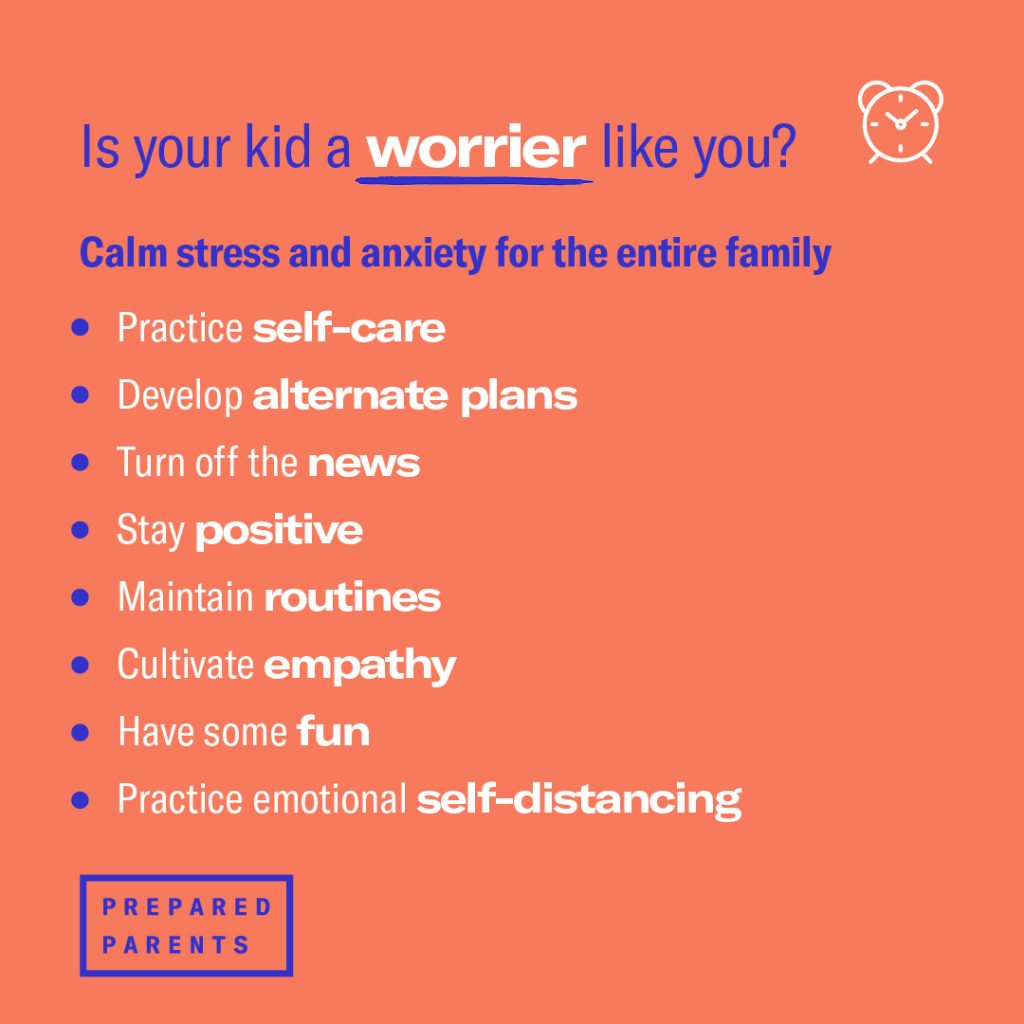Worry is often the go-to when we’re faced with uncertainty. It gives us a feeling of control in an out-of-our control situation because we’re working overtime to come up with solutions. But worrying doesn’t really work. It just robs us of enjoyment in the present, saps our energy, and keeps us up at night.
Worriers run in families. Worrying increases at school age when kids become nervous about social situations, tests, criticism, and physical harm, to name just a few. Around the age of 8 they start to catastrophize their worries and may begin to believe that worrying is a good thing to do to prevent bad things from happening.
Our brains are wired to feel anxiety when we don’t know what’s coming next. In a study at CalTech, researchers determined that the less information we have, the more irrational and erratic our decisions become. However, kids can develop strategies for responding to uncertainty by nurturing the habits of self-regulation and stress management, both key components of healthy development.
Self-regulation and Stress Management are two of the 16 Habits of Success that Prepared Parent’s resources are rooted in. The Habits of Success are social and emotional mindsets and behaviors that set kids up for success in school and life. They were developed by educational psychologist Dr. Brooke Stafford-Brizard of education research non-profit Turnaround for Children, in her Building Blocks for Learning Framework.
The Framework is built upon foundational skills that give kids the mental and emotional security needed to engage and connect with others. These skills, represented on the first row of the framework, include:
- Attachment: Having a strong bond with an adult who cares about me
- Stress management: Figuring out how to become calm and balanced when situations get stressful
- Self-regulation: Directing and maintaining my attention and emotions
Healthy development starts with strong parental or caregiver bonds and is strengthened when our kids learn how to manage stress and emotions, so that they can focus on external goals.
Try these strategies to calm stress and anxiety for the entire family:

Practice self-care
Take a deep breath. Calm your own anxieties to model a response for your kids. Then, help them to do the same.
- Acknowledge your feelings and talk about them with your kids.
- Label your irrational thoughts before they become irrational fears. Now focus on what you know to be the facts of the situation.
- Establish rituals for the family.
- Set up boundaries to separate from anxiety-stoking friends.
Turn off the news
It’s important to stay informed, but bad news can have a negative effect and increase feelings of anxiety and worry. Limit how much news you and your kids consume.
Stay positive
Positive thoughts quiet irrational thinking by focusing the brain on something that’s completely stress-free. Consider what you’re grateful for; gratitude has the power to heal and energize.
Maintain routines
Routines provide a sense of control when a lack of structure increases feelings of stress. Morning Check-Ins and evening Check-Outs, family meals, and other routines will give you a sense of continuity even now.
Cultivate empathy
Empathizing with others to improve the ability to regulate emotions and provides social connectedness. We are not alone.
- Talk openly about how others are dealing with the uncertainty.
- Discuss the lessons you’re learning in stressful situations.
- Be kind to each other and your wider community.
Have fun
Play brings joy. It also develops emotional control, social competency, and curiosity. While it’s hard to predict what’s coming next, your family can control the chaos by having a laugh and getting serious about play!
Practice emotional self-distancing
Adaptive self-reflection—the act of self-distancing from past and future stressors—leads to lower levels of anxiety as well as fewer negative visualizations about what might happen. When adults and kids experience strong emotions, we try and make sense of them. This sense-making can take the form of positive self-reflection and emotional self-distancing (resulting in lower anxiety levels) or it can lead to worrying (making us feel worse). Parents can help kids pivot from worrying to self-regulation and “taking a step back” by teaching their kids the four steps to emotional self-distancing.

